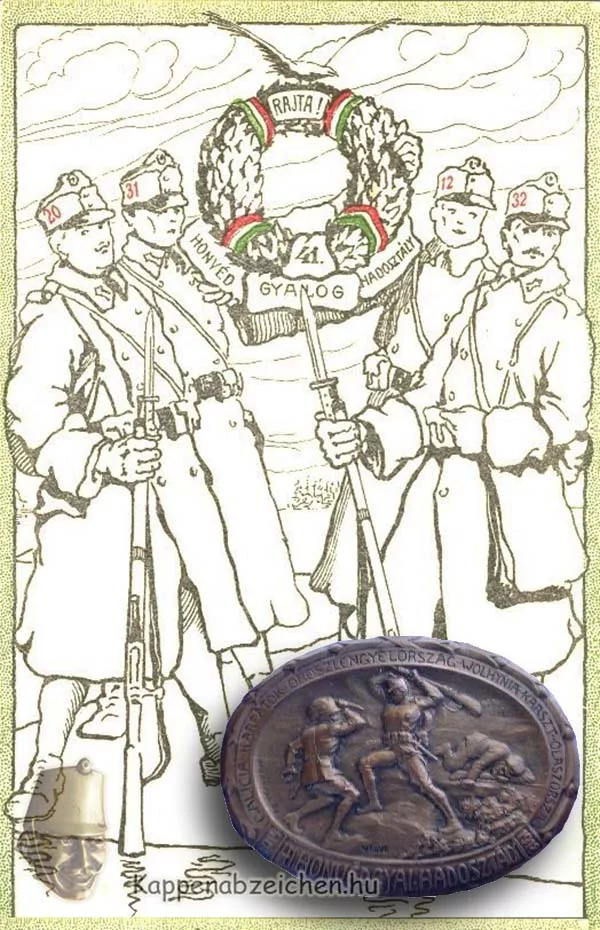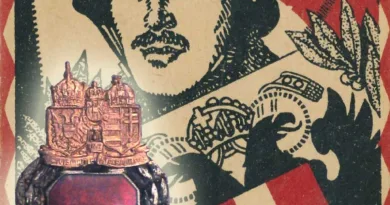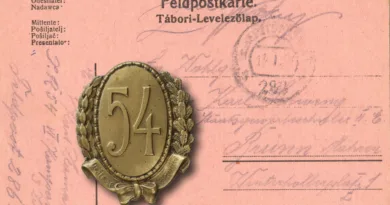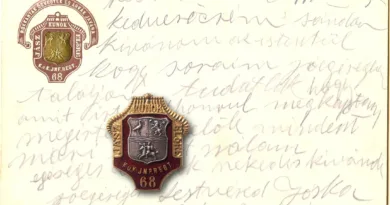41st Honvéd Infantry Division
The Hungarian readers are familiar with the 41st Honvéd Division from many descriptions. The memoirs of its regiments provide many details about the heavy fighting in which it participated. At the beginning of the war, they fought on the Eastern Front, in notable places such as Rawa Ruska or Podhajce, in the first and second battles of Lemberg, as part of the 4th Army. In the winter of 1914, they participated in the critical battles around Krakow along the Dunajec. In 1915, the division was transferred to the Carpathians, to the Lupkow Pass. They fought in the unsuccessful counterattack launched to liberate Przemysl. After the Gorlice breakthrough, they participated in the pursuit of Russian troops in the central part of the front towards Lublin and Brest-Litovsk. The strengthening Russian defense slowed down the Allied advance from September 1915. At that time, the division was withdrawn to Lublin, then transferred to the 2nd Army. From October to June 1916, they were stationed in the area of Bugoslawka in Volhynia.
During the Brusilov offensive, their front section that connected to the Lutsk breakthrough point in the north was also withdrawn. Thus, the 41st Division took up a defensive position on the banks of the Styr, and then in August retreated behind the Stochod river. Here, the Russian advance was stopped. The division was then deployed in the area of Mielnica. At the end of 1916, it was ordered to the Italian front. At the beginning of February, they were placed on one of the most dangerous front sections between Fajti Hrib and Kostanjevica. Here, they had to endure great sacrifices, especially in the 11st Battle of the Isonzo. The history of the defense of Kostanjevica, the blocking of the Italian invasion and the counterattack is discussed in great detail in the history of each regiment involved (12. 20. 31. 32.). After the fall breakthrough of the Italian front, they took part in the pursuit of the Italians in the southern sector. They were placed in positions in the Piave estuary at the end of 1917.
In February 1918, they were placed in a defensive position opposite Montello. During the Piave Offensive, they acted as reinforcements sent forward from the reserve and arrived at the Piave opposite Nervesa. The division’s attempts to cross the river were only partially successful, with huge losses. The 20th Honvéd Regiment failed to cross, and the troops that did cross were not replenished and had to retreat shortly. In October 1918, the division defended itself in the main direction of the Entente counterattack. The attack was successful within three days and a retreat had to be ordered.
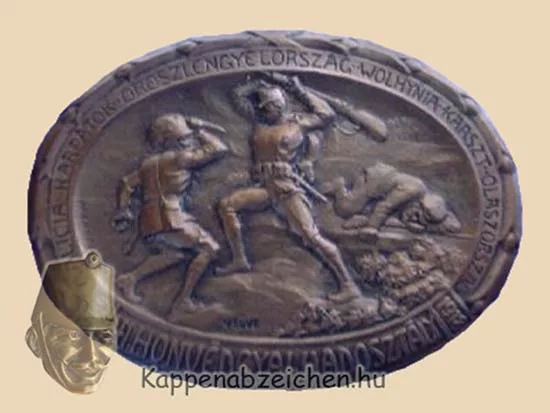
The well-known insignia of the 41st Division shows the conditions in 1918. After defeating the Russian enemy, it was now necessary to turn against the Italians. The badge captures this moment. On the correspondence card used as a background, one soldier from each of the four regiments of the division holds up a laurel wreath symbolizing the glorious battles. The badge of the division’s assault troop with the inscription Piave was certainly made after the Piave Offensive. Interestingly, it does not have any motif referring to such an assault team. This is one of the badges of the 14th Hungarian Army Infantry Regiment, only with a different inscription.


